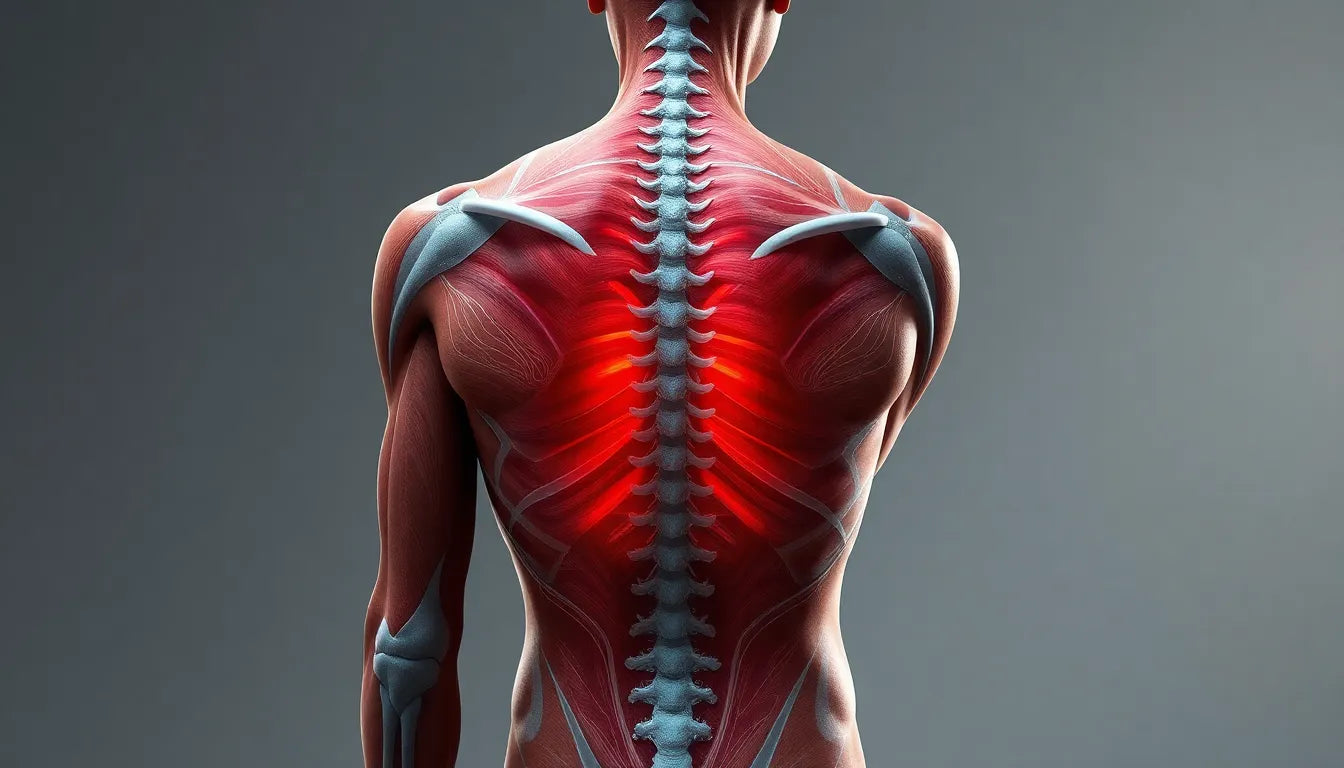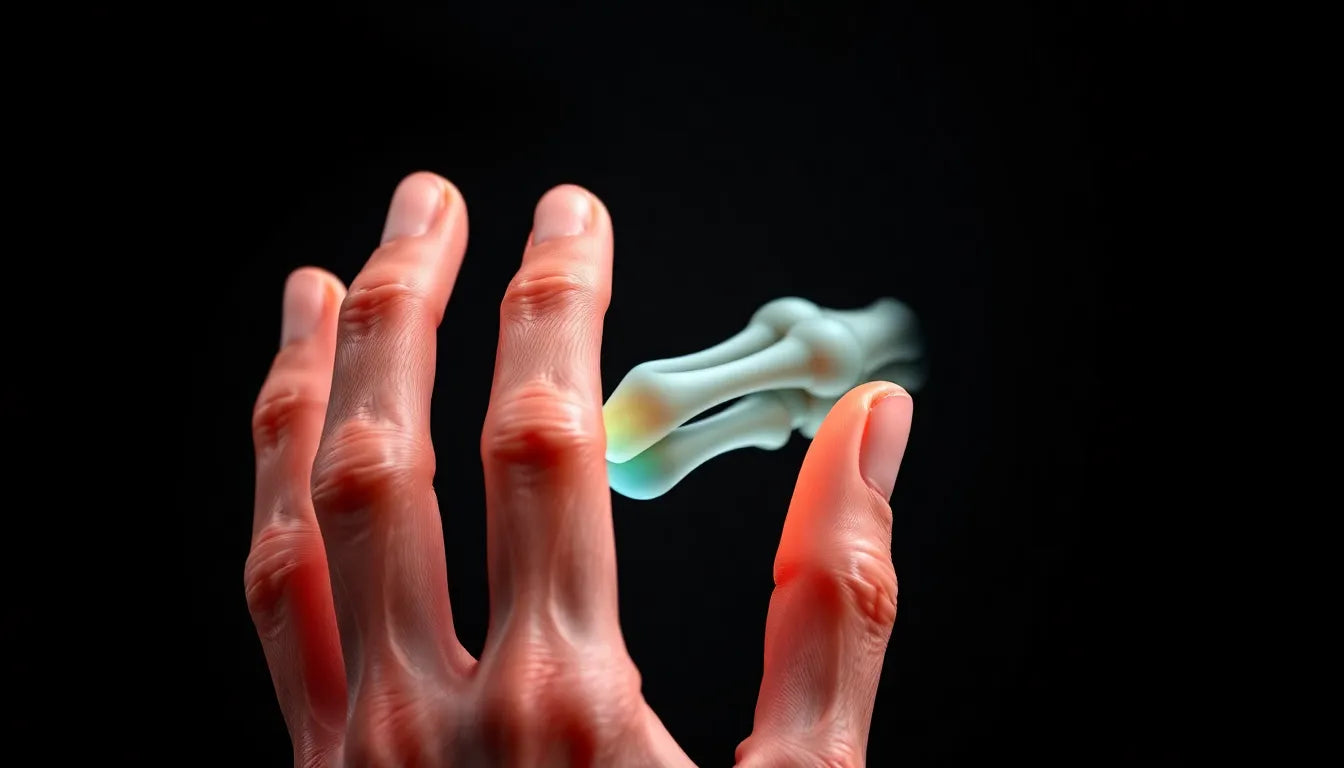Back strain is a common yet often misunderstood condition that affects countless individuals, disrupting daily activities and overall quality of life. Unlike other types of back pain, back strain specifically refers to an injury to the muscles or tendons in the back, typically resulting from overstretching or tearing. This condition is distinguishable from back sprains, which involve ligaments instead of muscles. Understanding the nuances of back strain is crucial for effective treatment and prevention.
Common causes of back strain
Back strain frequently arises from everyday activities that involve improper lifting techniques, sudden twisting motions, or maintaining poor posture for extended periods. For instance, lifting heavy objects without bending at the knees or twisting the torso can place undue stress on the back muscles, leading to strain. Additionally, sedentary lifestyles and prolonged sitting, particularly with inadequate ergonomic support, can weaken back muscles, making them more susceptible to injury. These factors contribute to the high prevalence of back strain, making it a significant concern for many people.

Lumbar support belt
Provides strong, adjustable lower back support and pain relief throughout daily activities.
The impact of back strain on daily life can be profound. Individuals may experience discomfort ranging from mild stiffness to severe pain, which can hinder mobility and limit participation in work, leisure, and social activities. This underscores the importance of recognizing the signs of back strain early and seeking appropriate treatment to prevent the condition from worsening.
Importance of timely and appropriate treatment
Addressing back strain promptly is essential to prevent the progression from an acute condition, which typically resolves within a few weeks, to a chronic issue that persists for months or longer. Untreated or improperly managed back strain can lead to chronic pain, muscle weakness, and even long-term disability. Therefore, timely intervention is crucial to restore function and minimize the risk of recurrence.
Effective back strain treatment often involves a multidisciplinary approach, combining medical and non-medical strategies to address the condition holistically. This may include pain management techniques, physical therapy, lifestyle modifications, and ergonomic adjustments. By exploring both acute and chronic treatment options, individuals can find relief and improve their overall well-being.
In the following sections, we will delve deeper into the specific treatment options available for both acute and chronic back strain, providing practical guidance to help you regain control and break free from the limitations imposed by this common ailment.
Effective treatment options for acute back strain
When dealing with acute back strain, it's crucial to take immediate and appropriate actions to alleviate pain and prevent further injury. Contrary to outdated advice, prolonged bed rest is not recommended. Instead, limiting bed rest to one or two days and gradually resuming normal activities as tolerated is more beneficial for recovery. During the initial 24 to 48 hours, applying ice and compression can help reduce inflammation and swelling. As the acute phase subsides, transitioning to heat therapy can promote blood flow and facilitate healing.
Pain management is a key component of treating acute back strain. Non-steroidal anti-inflammatory drugs (NSAIDs), such as ibuprofen, are commonly recommended to relieve pain and reduce inflammation. In some cases, muscle relaxants may be prescribed to alleviate muscle spasms. However, it's essential to use these medications under the guidance of a healthcare professional to avoid potential side effects.
Non-pharmacological options play a significant role in recovery. Superficial heat and cold therapy, early mobilization, and gentle exercise are effective strategies to enhance healing. Physical therapy can also be invaluable, as it provides tailored exercises to strengthen the back muscles and improve flexibility, reducing the risk of future injuries.
While most cases of acute back strain can be managed at home, it's crucial to recognize red flag symptoms that require immediate medical attention. These include incontinence, severe neurological issues, or signs of infection. Seeking medical advice promptly in such cases can prevent complications and ensure appropriate care.
Approaches for managing chronic back strain
Chronic back strain, which persists for four weeks or more, often requires a more comprehensive treatment plan. Exercise and manual therapies are central to managing chronic pain. Classification-based exercise programs, such as Pilates, Tai Chi, and Yoga, have shown effectiveness in improving flexibility, strength, and overall well-being. Additionally, spinal manipulation and massage can provide relief and enhance mobility.

Men's Posture Shirt™ - Black
Stimulates muscles, improves posture, and can help relieve pain and tension all day.
Psychological approaches are also valuable in chronic pain management. Acceptance and Commitment Therapy (ACT) and cognitive-behavioral therapies help individuals cope with persistent pain by addressing the psychological aspects of discomfort. These therapies focus on enhancing mental resilience and improving quality of life.
For some individuals, pharmacological treatments may be necessary. Duloxetine, an antidepressant, can be considered for chronic cases when non-drug strategies are insufficient. Tramadol, a pain reliever, may also be used as a second-line treatment. However, medication should always be part of a broader, multidisciplinary approach to avoid dependency and side effects.
Self-management and education are crucial components of chronic back strain treatment. Educating patients about their condition and encouraging self-directed care empowers them to take an active role in their recovery. Maintaining function and preventing recurrence through lifestyle adjustments, such as ergonomic improvements and regular exercise, are essential for long-term success.
Personalized care for optimal recovery
While there are numerous treatment options available for back strain, it's important to recognize that each individual's needs are unique. A personalized approach, tailored to the specific circumstances and preferences of the patient, is often the most effective way to achieve optimal recovery. Collaborating with healthcare professionals to develop a comprehensive treatment plan that combines medical and non-medical strategies can significantly enhance outcomes and help individuals break free from the limitations imposed by back strain.
In the next section, we will explore advanced and interventional treatments, compare insights from top sources, and address common questions about back strain treatment to provide a well-rounded understanding of this condition and its management.
Advanced and interventional treatments for back strain
In cases where conservative management of back strain does not yield the desired results, advanced and interventional treatments may be considered. These options are typically reserved for severe cases or when traditional methods have failed to provide relief. Surgical interventions, such as spinal fusion or discectomy, might be necessary for individuals experiencing debilitating pain or significant structural issues. However, surgery is generally seen as a last resort due to the potential risks and recovery time involved.
Minimally invasive procedures, including epidural steroid injections or nerve blocks, can offer relief for those suffering from chronic back strain. These treatments aim to reduce inflammation and interrupt pain signals, providing temporary relief and allowing patients to engage more effectively in rehabilitation programs. It's essential to consult with a healthcare professional to determine whether these interventional treatments are appropriate based on the individual's specific condition and medical history.
Comparative insights from leading sources
Leading articles on back strain treatment emphasize a multidisciplinary approach, combining both medical and non-medical strategies. The consensus among top sources is that early mobilization, NSAIDs, and physical therapy are effective first-line treatments for acute back strain. While most agree on the benefits of exercise and manual therapies for chronic cases, there is some variability in the recommended psychological and pharmacological approaches.
For instance, while some sources highlight the effectiveness of cognitive-behavioral therapies and ACT for managing chronic pain, others question the efficacy of certain treatments, emphasizing the need for personalized care. This underscores the importance of tailoring treatment plans to individual needs and preferences, ensuring optimal outcomes and patient satisfaction.
Frequently Asked Questions
What is the difference between a back strain and a sprain?
Back strain involves injury to the muscles or tendons, while a sprain affects the ligaments. Strains result from overstretching or tearing of muscle fibers, whereas sprains involve the stretching or tearing of ligaments, which connect bones.
How long does it typically take to recover from a back strain?
Recovery time for a back strain can vary depending on the severity of the injury and the individual's overall health. Generally, acute back strain may resolve within a few days to a few weeks with appropriate treatment, while chronic cases may take longer and require more comprehensive management.
Are there any home remedies that can help with back strain?
Yes, several home remedies can aid in the recovery of back strain. These include applying ice or heat to the affected area, engaging in light stretching exercises, and making ergonomic adjustments to your workspace or daily activities to reduce strain on the back.
When should I see a doctor for back strain?
It's advisable to see a doctor if you experience severe pain, incontinence, numbness, or weakness in the legs, as these could be signs of a more serious condition. Additionally, if the pain persists despite home treatment, seeking professional evaluation is recommended.
Can back strain be prevented?
Yes, back strain can often be prevented by maintaining good posture, engaging in regular exercise to strengthen back muscles, and using ergonomic aids when lifting heavy objects. Being mindful of your movements and avoiding sudden twists or bends can also reduce the risk of strain.
Kilder
- American Academy of Physical Medicine and Rehabilitation. "Lumbar Strain."
- StatPearls. "Back Strain and Sprain."
- Cleveland Clinic. "Back Strains and Sprains."
- Mayo Clinic. "Back Pain - Diagnosis and Treatment."
- New York State Workers' Compensation Board. "Mid and Low Back Injury Medical Treatment Guidelines."
- American Academy of Family Physicians. "Back Pain Clinical Recommendations."
- North American Spine Society. "Evidence-Based Clinical Guidelines for Multidisciplinary Spine Care: Diagnosis and Treatment of Low Back Pain."
- Journal of Orthopaedic & Sports Physical Therapy. "Low Back Pain."


















